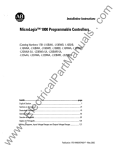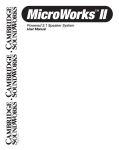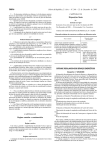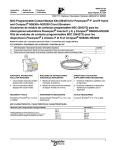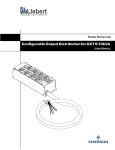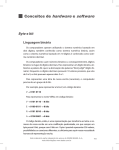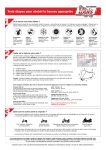Download Abstract Paradox 2 Experiment
Transcript
Rev 1.4 14 Feb 2004 The World Leader in Electromagnetic Physics Paradox 2 Experiment By Robert J Distinti B.S. EE 46 Rutland Ave. Fairfield Ct 06825. (203) 331-9696 AAbbssttrraacctt The Paradox 2 experiment is a simple device which develops both AC and DC electric power in a manner not described by accepted (classical) magnetic flux theory (hence the name Paradox). Essentially, this device generates electric power while the number of flux lines contained in (linked by) each conductive loop remains constant. This experiment demonstrates only one of many anomalies and paradoxes of classical electromagnetic theory. For a complete list see http://www.distinti.com/docs/apoce.pdf Note: this is not free-energy or over-unity; just an exploratory experiment of the laws of physics. Copyright © 2003-2004 Robert J Distinti. Page 1 of 22 Rev 1.4 14 Feb 2004 The World Leader in Electromagnetic Physics 1 THE PARADOX 2 ..................................................................................... 3 1.1 DESCRIPTION OF THE PARADOX 2............................................................ 4 2 ANALYSIS USING CLASSICAL THEORY ......................................... 6 2.1 FROM THE TOP ........................................................................................ 6 2.2 FROM THE SIDE ....................................................................................... 7 2.3 CONCLUSION OF CLASSICAL ANALYSIS................................................... 8 3 PRIOR TO TESTING ............................................................................... 9 3.1 SIMPLIFIED WIRING FROM PREVIOUS........................................................ 9 3.2 MEASUREMENT ENSEMBLE .................................................................... 10 3.3 DVMX1000 .......................................................................................... 11 3.4 MICROVOLTS?....................................................................................... 11 3.5 SEEBECK (THERMOCOUPLE) EFFECTS ................................................... 12 3.6 GREASE ................................................................................................. 13 4 TESTS PERFORMED ............................................................................ 14 4.1 NO MAGNETS—NO POWER .................................................................... 14 4.2 OPPOSING MAGNETS—POWER ............................................................... 14 4.3 BOTH MAGNETS NORTH-FACE-UP —ESSENTIALLY NO POWER............... 15 4.4 ONE MAGNET – HALF POWER ................................................................. 16 4.5 FUTURE TESTS ....................................................................................... 18 5 CONCLUSION ........................................................................................ 19 APPENDIX A. CONSTRUCTION NOTES .......................................... 20 A.1. MAGNET/ROTOR SIZE RELATION ........................................................ 20 APPENDIX B. NEW ELECTROMAGNETISM.................................. 21 A.2. FROM THE TOP .................................................................................... 21 A.3. FROM THE SIDE ................................................................................... 21 APPENDIX C. DOCUMENT HISTORY .............................................. 22 Copyright © 2003-2004 Robert J Distinti. Page 2 of 22 Rev 1.4 14 Feb 2004 The World Leader in Electromagnetic Physics 1 The Paradox 2 The following photo is a close-up of the Paradox 2 experiment. For MPEGs of the device in operation and schedule of public demonstrations, go to http://www.distinti.com/paradox . Figure 1-1: Close-up of completed Paradox 2 Generator Output measurement ensemble. Connected by brushes across lower and upper shafts. Includes Low pass filter and micro-volt sensitive measuring instrumentation. Upper brass shaft – electrically isolated from lower shaft and electrically connected to north side brush assembly Disk magnet, South side up South side brush assembly, moves with armature and makes contact with stationary copper ring and is electrically connected to lower brass shaft. S Stationary copper ring V N Disk magnet, North side up North side brush assembly, moves with armature and makes contact with stationary copper ring Lower Shaft. Electrically isolated from upper shaft and connected to south side brush assembly Figure 1-2: Schematic of Paradox 2 Generator Copyright © 2003-2004 Robert J Distinti. Page 3 of 22 Rev 1.4 14 Feb 2004 The World Leader in Electromagnetic Physics 1.1 Description of the Paradox 2 Note: Although this generator develops both AC and DC power; our primary interest (in all experiments) is the DC power. Our discussion of the AC components is provided only for completeness. The Paradox 2 generator consists of a rotating element (the rotor) and a stationary element (called the stator). The rotor consists of a plywood disk into which two disk magnets are embedded. One magnet is North-face-up and the other South-face-up. The rotor is suspended by two brass shafts (the upper and lower) which are electrically isolated from each other. The upper shaft is electrically connected to a brush assembly which brings current from the shaft out across the North-face-up magnet (see Figure 3-1) and deposits it on a stationary copper ring which forms part of the stator. The rotor contains another brush assembly which picks current up from the opposite side of the stationary ring and brings it across the South-face-up magnet and down (through a wire) to the lower shaft where it is allowed to exit. The following photo (Figure 1-3) shows the stationary copper ring and the center conductive socket which mechanically and electrically contacts the lower shaft. Figure 1-3: Detail showing armature removed Copyright © 2003-2004 Robert J Distinti. Page 4 of 22 Rev 1.4 14 Feb 2004 The World Leader in Electromagnetic Physics The generator disk is driven by a toy motor gear box as shown in the following photo. The blue and red wires run across the top to a 6 Volt dry cell at the right. The capacitor soldered across the terminal lugs helps reduce high frequency brush noise. The capacitor shown is .68uf Polypropylene. The motor is electrically isolated from the drive shaft by plastic gears. Consequently, there is no significant electromagnetic coupling between the motor circuit and the generator circuit. This is verified by the first test where the generator is run without magnets and no power is detected at the output (see section 4.1). If there were coupling of energy from the motor circuit (or any other extraneous source) then the test run without magnets would show a non-zero signal. Copyright © 2003-2004 Robert J Distinti. Page 5 of 22 Rev 1.4 14 Feb 2004 The World Leader in Electromagnetic Physics 2 Analysis using classical theory Since all models of electromagnetism (both New and Classical) are linear, then it is simpler to break up the analysis into separate parts and then sum the separate parts together. This is called superposition. Note: Although this generator develops both AC and DC power; our primary interest (in all experiments) is the DC power. Our discussion of the AC components is provided only for completeness. 2.1 From the Top Direction of rotation Area A N Closing path These elements rotate together V Point C S Area B Figure 2-1: Top Schematic view of generator in operation When the device is rotating counter clockwise, charges are moved in the direction shown by the blue arrows in the above diagram. If we ignore the closing path for a moment, it is clear that the areas that link the magnetic flux lines (Area A and Area B) always move with the magnets; therefore, there can not be flux lines entering or exiting and therefore no flux lines are being cut. Secondly, the total flux contained in areas A and B is the sum of two opposing magnets; therefore, no net flux is contained in either Area A or Area B. Copyright © 2003-2004 Robert J Distinti. Page 6 of 22 Rev 1.4 14 Feb 2004 The World Leader in Electromagnetic Physics Some have argued that the bisection of either area A or area B (which are in motion) by the stationary closing path at point C is where the time changing flux is developed. There are three problems with this explanation. The first is that the closing path does not make electrical contact with the outer ring at the point of bisection (point C); therefore, this does not represent an area circumscribed by a closed conductive path. Secondly, if this were truly the explanation of the system, then we should expect only an AC output. The third problem with the above explanation (referring to the following diagram) is that it is possible to extend the shafts and the closing path to the extremes to avoid cutting flux from the magnet. By closing the loop at point C (as shown by the dashed black line) prevents extending the loop from having an impact; however, it would short any developed emf; either way, there is no valid classical flux explanation. Alternate closing path brush position Missing connection between copper ring and closing path at point C N S V Closing path Figure 2-2: Thirdly 2.2 From the Side Viewing the generator from the side as shown in the following diagram, enables us to identify area D as another possible area that could link flux according to the classical flux model. Copyright © 2003-2004 Robert J Distinti. Page 7 of 22 Rev 1.4 14 Feb 2004 The World Leader in Electromagnetic Physics Area D N S V Closing path Figure 2-3: Paradox Generator: Schematic side view Because the ring is stationary and the magnets move symmetrically with respect to it, there is no flux cut by the ring; consequently, because the armature brush assemblies move with the magnets, they too do not cut flux; therefore, we can redraw the above into the following electrical equivalent: Area D A single flux line N S V Closing path Figure 2-4: Side View: Simplification From the standpoint of classical theory, as a magnet passes through area D, flux lines are indeed cut as shown in Figure 2-4; however, the number of exiting flux lines that are cut equals the number of entering flux lines that are cut; therefore, there is no net flux cut, and consequently no net emf predicted by classical theory. 2.3 Conclusion of Classical Analysis It may be possible to explain A.C. signals developed from this device using classical field theory; however, there seems to be no way of anticipating DC power. This is why we focus on the DC output of the device. In the experimental tests, we apply a low pass filter to suppress A.C. (transient) signal components. Copyright © 2003-2004 Robert J Distinti. Page 8 of 22 Rev 1.4 14 Feb 2004 The World Leader in Electromagnetic Physics 3 Prior to Testing 3.1 Simplified wiring from previous The following photo shows a close-up of the brush circuit to show that it matches the diagrams. In the previous photos (from version 1.0 of this document), there were superfluous red and green wire loops that carried the current from the shafts to points on the brushes farther to the outside. The red and green wire loops were intended to provide slack when moving the brush assembly out of the way for changing out the magnets. Figure 3-1: Armature Brush wiring close-up Although the presence of the loops does not affect the outcome of the experiment, they were removed and the brushes connected to the shafts as shown above to ensure that the presence of the loops does not cause confusion. All tests are run on the above configuration. Copyright © 2003-2004 Robert J Distinti. Page 9 of 22 Rev 1.4 14 Feb 2004 The World Leader in Electromagnetic Physics 3.2 Measurement ensemble Because we are primarily interested in the DC output of this generator, we suppress the AC components and other transients with the following low pass filter. R=470K From Generator R= 10K C=0.33uF * To DVMx1000 and scope Figure 3-2: 10K load and 1 Hertz Low Pass filter • * Use Polypropylene capacitor. Other types may produce anomalous energy build-up (see our free paper http://www.distinti.com/docs/cap_anom.pdf for more details). The 10K ohm resistor is very important. The 10k resistor shunts all power developed through triboelectrification. Triboelectrification is developed by the brass brush assemblies as they move through the air. This can be verified by removing the 10k ohm resistor and the magnets and running the generator. When running, seemingly random power is detected by the measurement ensemble. By placing masking tape over the exposed brass to reduce contact with moving air helps mitigate these signals; however, it is much simpler to load the generator down with the 10K load since the power developed by the magnets is much more powerful than that developed by triboelectrification. The 10k ohm load easily shunts the energy developed from triboelectrification; this is verified by running the generator with a 10k load and no magnets to show no signal output. The 1Hertz low pass filter (top resistor and cap) suppresses AC components as well as power-line induced coupling and other transients. The above filter has improved response characteristics than that published in the previous release of this document (Rev 1.0). The previous filter had a 1 radian per second cutoff frequency (approximately 0.16 Hertz) which resulted in unnecessarily slow charging and discharging curves. Copyright © 2003-2004 Robert J Distinti. Page 10 of 22 Rev 1.4 14 Feb 2004 The World Leader in Electromagnetic Physics 3.3 DVMx1000 Because the DVMx1000 has a gain of 1000, the vertical scope sensitivity is actually 100 microvolts per division instead of 100 millivolts per division shown in the screen captures. 100 microvolts per division is the vertical sensitivity used in all tests except where specified. The DVMx1000 is a chopper-stabilized amplifier has an input offset of less than 2uV (0.5uV Typical). The DVMx1000 is used as the front end into the scope. The DVMx1000 has a second order roll-off for frequencies above 300 hertz. See the DVMx1000 user’s manual for more details http://www.distinti.com/docs/ee001_m.pdf 3.4 Microvolts? Some may argue that 100 microvolts is too small to be of consequence; however, the following photo (Figure 3-3) shows that it is the proper scale for the experiment. (Note: the horizontal setting is 1 second per division). The scope shows a 10 second recording of the voltage induced in the twoturn loop of red wire by randomly moving the disk magnet about the loop. The disk magnet used is identical to the ones used in the Paradox 2. The resultant displacements, shown on the screen capture, are in the same range (100 microvolts division) as that developed by the Paradox 2. The Paradox 2 tests are in Section 4. Copyright © 2003-2004 Robert J Distinti. Page 11 of 22 Rev 1.4 14 Feb 2004 The World Leader in Electromagnetic Physics Figure 3-3 Effect of randomly moving a magnet about a loop of wire Therefore, 100 microvolts per division is the proper output range for a device of this scale and magnet strength. 3.5 Seebeck (Thermocouple) Effects The output of the Paradox 2 Experiment is not the result of thermocouple (Seebeck) effects. The dissimilar metal junctions are balanced throughout the design causing the thermal offsets to substantially cancel each other. Even if the junctions were not balanced, the worst case Seebeck junctions are the brass to copper junctions which only have about 8uV offsets for a 20degree (F) change in temp (see our DVMx1000 users manual http://www.distinti.com/docs/ee001_m.pdf for techniques of measuring Copyright © 2003-2004 Robert J Distinti. Page 12 of 22 Rev 1.4 14 Feb 2004 The World Leader in Electromagnetic Physics Seebeck effects). These 8uV offsets are far below the 150uV output of the device (see tests in next section) It is illogical for Seebeck effects to account for the output of the device since Seebeck voltages are not dependant on magnetism. As such the device would have an output even when operated without magnets. Furthermore, the output would persist for a time after the device is turned off as the junctions cool. Finally, the Seebeck junctions do not change direction when the device is operated in reverse; as such, the output polarity would not change if the device were operated in reverse. The tests performed in section 4 clearly show substantially zero output when the device is off or operated without magnets installed. When magnets are installed, the output power is proportional to speed and direction of spin. This device can not be explained away by Seebeck effects. 3.6 Grease In order to reduce friction and enhance conductivity at the 4 brush positions, a grease was concocted by combining graphite powder and household motor oil (like 3 in 1 brand). This grease is what caused the prototype to become sooty and grungy in the following photos. Copyright © 2003-2004 Robert J Distinti. Page 13 of 22 Rev 1.4 14 Feb 2004 The World Leader in Electromagnetic Physics 4 Tests Performed 4.1 No magnets—no power When the magnets are removed; no power is developed. This test verifies that the generator does not produce power from unintentional effects (such as Seebeck, thermoelectric (thermocouple), triboelectric, RF coupling, etc. etc.). See the mpeg movie pdx2_no_mags.mpeg to watch the “magnet-less” generator produce no power. 4.2 Opposing magnets—power The normal configuration of this generator has one magnet North-face-up and the other magnet South-face-up. Copyright © 2003-2004 Robert J Distinti. Page 14 of 22 Rev 1.4 14 Feb 2004 The World Leader in Electromagnetic Physics The following scope capture shows the generator run in one direction for 4 seconds and then run in reverse for 4 seconds (approx). The MPEG movie (pdx2.mpeg) which shows the actual test that this trace was taken from can be downloaded from the Paradox2 generator page http://www.distinti.com/paradox . 4.3 Both magnets North-face-up — essentially no power Copyright © 2003-2004 Robert J Distinti. Page 15 of 22 Rev 1.4 14 Feb 2004 The World Leader in Electromagnetic Physics This test produced minimal deflection which only shows that the magnets are not perfectly equal in strength or position. If magnets were identical in strength and the machining of the generator were perfect then equal and opposite emfs would be induced in the device and no NET power detected at the output. This is as predicted by New Electromagnetism. Note: We are using double the vertical sensitivity (50uV per division) than previous tests in order to enhance the minimal deflection of the trace. In the first four divisions of the scope screen capture shown above, the generator is run forward; in the next four divisions, the generator is run in reverse and then the generator is off for the last two divisions. It is plainly visible that there is minimal trace deflection. For all intents and purposes, there is no power generated in this configuration. 4.4 One magnet – half power If the magnets were perfectly equal in strength and the device perfectly machined, then removing one magnet will result in half the voltage output (with everything else being equal). Copyright © 2003-2004 Robert J Distinti. Page 16 of 22 Rev 1.4 14 Feb 2004 The World Leader in Electromagnetic Physics The following measurements were taken to test the one magnet operation of the Paradox 2: 1. Both magnets = 180uV approx. 2. North magnet only =20 uV approx. – retarded spin (see following text) 3. South magnet only = 90uV approx. 4. North magnet in South hole = 80uV approx. When the generator is run with only the North magnet installed (case 2 above), the weight imbalance of the rotor causes it grind against the stator. This grinding phenomenon causes the loss of rpm and consequently output voltage as shown in the measured results. The above photo shows that the rotor, near the North magnet hole, only clears stator by about a 64th of inch (for reference, magnets are 1.125 inches in diameter). By running either magnet out of the South Hole (cases 3 and 4 above) resolves the problem since the South side of the rotor provides more clearance. The clearance of the South side of the rotor is shown in the next photo. Copyright © 2003-2004 Robert J Distinti. Page 17 of 22 Rev 1.4 14 Feb 2004 The World Leader in Electromagnetic Physics The above photo shows that the rotor on the South side has more clearance. Therefore, this side is more forgiving when run out of balance. Operating the generator with either magnet in the South hole (cases 3 and 4 above) produces substantially half the normal output voltage output (case 1). As stated previously, if the magnets where perfectly equal, and the experiment perfectly machined, then running with one magnet will produce half the output (with everything else being equal). 4.5 Future tests We are improving our magnetic rotations modeling software (see mag_rot_man.pdf) to model complex systems such as this. Once this improvement is complete, we intended to use the software to design an optimized and more accurately machined version in which more precise measurements will be afforded. Copyright © 2003-2004 Robert J Distinti. Page 18 of 22 Rev 1.4 14 Feb 2004 The World Leader in Electromagnetic Physics 5 Conclusion As demonstrated in preceding sections, classical magnetic flux theory provides no practical explanation for the output of this generator (either AC or DC). Power is predicted in classical flux theory when a conducting material (such as copper) “cuts” or “links” flux lines. The Paradox 2 Generator develops both DC and AC electric power while the number of flux lines linked remains constant in all cases. This experiment clearly shows that classical electromagnetic theory is not a complete description of electromagnetic interactions. (We have many free publications available which demonstrate other mismatches between Mother Nature and classical electromagnetic theory -- see the publications link at our site). Another purpose of this experiment is to pry classical physics out of the infinite loop it has been stuck in over the Homopolar Paradox (see http://www.distinti.com/docs/homopolar.pdf). The Homopolar Paradox has been “kicked” around for about 200 years. In order to resolve the paradox, researchers have tried to answer the questions of whether the flux rotates with the magnet or not. Proponents of the rotating field suggest that energy is developed as the field is “cut” by the stationary closing path while others propose that the energy is developed in the disk which means that the field can not be rotating. New Electromagnetism (Specifically New Magnetism) teaches that the above question is moot since the field does rotate; however, no energy is developed in the closing path. This sounds like a contradictory statement to classically trained scientists and engineers; however, the Paradox 2 experiment clearly shows that power can be developed without cutting flux lines. Finally, it has been our experience that classical flux theory is so confusing that many researchers do not know how to apply it properly (see http://www.distinti.com/docs/coax_bar_mag.pdf for a common example). This is why www.Distinti.com is the world leader in electromagnetic physics. Copyright © 2003-2004 Robert J Distinti. Page 19 of 22 Rev 1.4 14 Feb 2004 The World Leader in Electromagnetic Physics A Appppeennddiixx A A.. C Coonnssttrruuccttiioonn N Nootteess These notes are for people who intend to build their own Paradox Generator. We will offer optimized kits and plans in the near future. The following construction tips will ensure success A.1 Magnet/Rotor Size Relation When we have completed the software modeling we will freely publish optimized disk/magnet size relationships. In the mean time, we recommend: If you plan to use magnets with holes, ensure the diameter of the rotor is at least three times the diameter of the magnets. If you plan to use solid disk magnets, ensure the diameter of the rotor is at least 4 times the diameter of the magnets. Copyright © 2003-2004 Robert J Distinti. Page 20 of 22 Rev 1.4 14 Feb 2004 The World Leader in Electromagnetic Physics A Appppeennddiixx B B.. N Neew wE Elleeccttrroom maaggnneettiissm m This section moved to an appendix to keep it from frightening away people too soon. A.2 From the Top New Magnetism applied to analysis of the top view predicts DC power as shown in the experimental demonstrations. Those people who have purchased the Engineer’s Edition of New Magnetism (BK001) will get full details published in the online support areas in the days and weeks to come. Also to be included is proprietary software packages which allow complex analysis of magnetic systems in motion. A.3 From the Side New Magnetism predicts AC transients developed as the magnets pass into, and consequently out of, Area D. These transients are cancelled by ensuring that the magnets pass equidistant from the top and bottom of the closing paths. Since we are more interested in the DC output of this device, the paths were adjusted to minimize AC components. Again, full disclosure of how to apply New Magnetism for these results is only available to purchasers of the Engineer’s Edition of New Magnetism (BK001). Copyright © 2003-2004 Robert J Distinti. Page 21 of 22 Rev 1.4 14 Feb 2004 The World Leader in Electromagnetic Physics A Appppeennddiixx C C.. D Dooccuum meenntt H Hiissttoorryy Document History: 1.0 Initial release 1.1 Improved response of filter from 1 rad/sec to 1 cycle/sec and re-shot all pertinent photos and movies. Other typographical and grammar fixes 1.2 Simplified abstract so as not to scare people away. It’s not a good idea to beat up on the sacred cows or beat the New Electromagnetism drum until after they see the experiment; moved New Electromagnetic discussion to appendix for same reason. Added chapter with test conducted using single magnet. 1.3 Added Seebeck effects discussion section (3.5) 1.4 Added details about how generator is driven. Copyright © 2003-2004 Robert J Distinti. Page 22 of 22






















